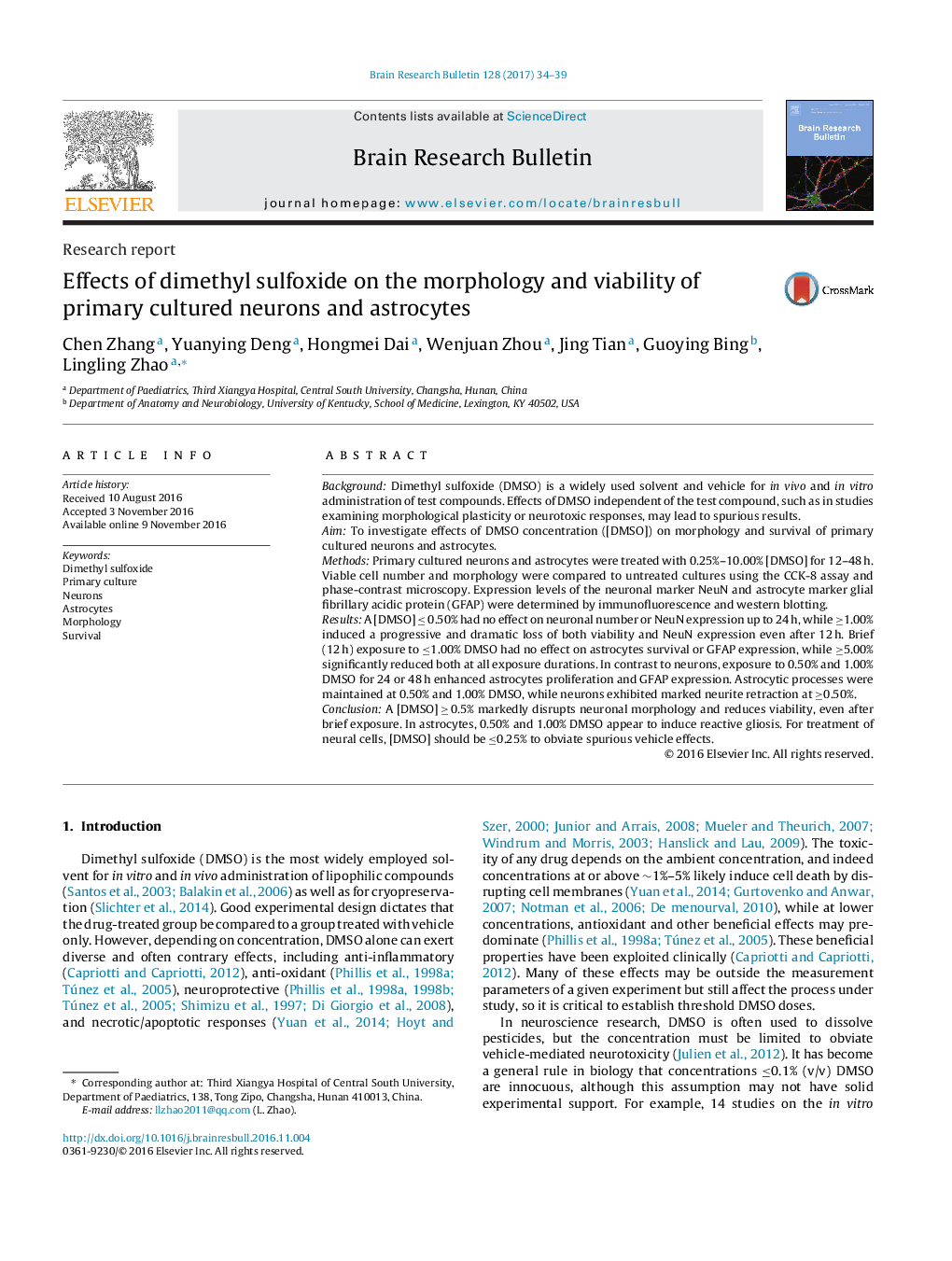| Article ID | Journal | Published Year | Pages | File Type |
|---|---|---|---|---|
| 5736228 | Brain Research Bulletin | 2017 | 6 Pages |
â¢Research effect of DMSO on neurocytes including nuerons and astrocyte.â¢DMSO reduces cell viability when cellular morphology has not changed.â¢Different neurocytes have different sensitivity to DMSO.â¢Guide for scientific community that use DMSO as solvent in studies.
BackgroundDimethyl sulfoxide (DMSO) is a widely used solvent and vehicle for in vivo and in vitro administration of test compounds. Effects of DMSO independent of the test compound, such as in studies examining morphological plasticity or neurotoxic responses, may lead to spurious results.AimTo investigate effects of DMSO concentration ([DMSO]) on morphology and survival of primary cultured neurons and astrocytes.MethodsPrimary cultured neurons and astrocytes were treated with 0.25%-10.00% [DMSO] for 12-48 h. Viable cell number and morphology were compared to untreated cultures using the CCK-8 assay and phase-contrast microscopy. Expression levels of the neuronal marker NeuN and astrocyte marker glial fibrillary acidic protein (GFAP) were determined by immunofluorescence and western blotting.ResultsA [DMSO] â¤Â 0.50% had no effect on neuronal number or NeuN expression up to 24 h, while â¥1.00% induced a progressive and dramatic loss of both viability and NeuN expression even after 12 h. Brief (12 h) exposure to â¤1.00% DMSO had no effect on astrocytes survival or GFAP expression, while â¥5.00% significantly reduced both at all exposure durations. In contrast to neurons, exposure to 0.50% and 1.00% DMSO for 24 or 48 h enhanced astrocytes proliferation and GFAP expression. Astrocytic processes were maintained at 0.50% and 1.00% DMSO, while neurons exhibited marked neurite retraction at â¥0.50%.ConclusionA [DMSO] â¥Â 0.5% markedly disrupts neuronal morphology and reduces viability, even after brief exposure. In astrocytes, 0.50% and 1.00% DMSO appear to induce reactive gliosis. For treatment of neural cells, [DMSO] should be â¤0.25% to obviate spurious vehicle effects.
